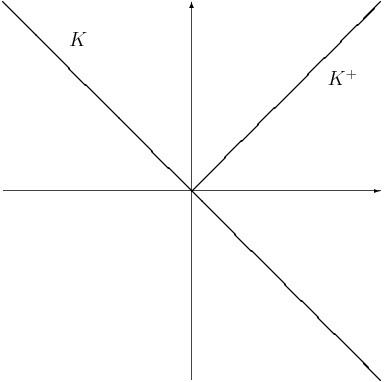 | ||
The solvency cone is a concept used in financial mathematics which models the possible trades in the financial market. This is of particular interest to markets with transaction costs. Specifically, it is the convex cone of portfolios that can be exchanged to portfolios of non-negative components (including paying of any transaction costs).
Contents
Mathematical basis
If given a bid-ask matrix
Definition
A solvency cone
Uses
A process of (random) solvency cones
The negative of a solvency cone is the set of portfolios that can be obtained starting from the zero portfolio. This is intimately related to self-financing portfolios.
The dual cone of the solvency cone (
Examples
Assume there are 2 assets, A and M with 1 to 1 exchange possible.
Frictionless market
In a frictionless market, we can obviously make (1A,-1M) and (-1A,1M) into non-negative portfolios, therefore
With transaction costs
Assume further that there is 50% transaction costs for each deal. This means that (1A,-1M) and (-1A,1M) cannot be exchanged into non-negative portfolios. But, (2A,-1M) and (-1A,2M) can be traded into non-negative portfolios. It can be seen that
The dual cone of prices is thus easiest to see in terms of prices of A in terms of M (and similarly done for price of M in terms of A):
Properties
If a solvency cone
